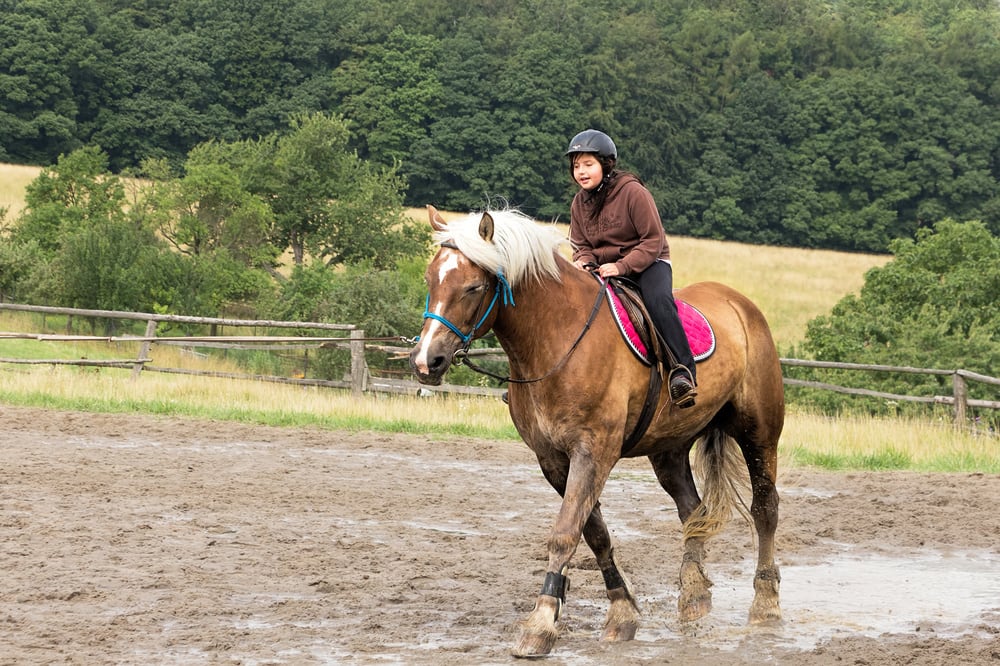…Suggests Stress is Helpful in Improving Behavior
A new study published in Frontiers in Public Health confirms some of what we have come to understand in Natural Lifemanship. The study indicated that riding horses improved the child’s ability to exercise appropriate response and self-control, but it depended on the horse that was ridden, and whether or not a stress response was activated.
The study was conducted with three different horses, all of differing breeds and sizes. After riding two of the horses (horses A & C), children showed an increased ability to appropriately perform tasks that required them to press a space bar when green or blue appeared on a computer screen and to avoid pressing it when red appeared. This required them to use an appropriate response and exercise self-control. However, after riding one of the horses (horse B), more children were unable to successfully complete this test than showed improvement in it.
Here is what happened. The researchers tracked the three-dimensional movements (up & down, left to right, front to back) of each horse along with the heart rate variability of the children. Riding horses A & C increased the sympathetic nervous activity of the children, indicating a fight or flight stress response. Riding horse B increased the parasympathetic nervous activity of the children indicating a rest response. Riding horse B did not activate a sympathetic nervous activity. Horse B had a significantly greater up and down movement than horses A & C. It seems the difference in this up and down movement, at least for this study, made the difference in the activation of the stress response in the riders, leading to a difference inappropriately performing the response and self-control tasks. Interestingly though, it did not have a significant effect on the improvement of performing simple arithmetic problems.
Put simply, the children who experienced a stimulating effect from riding horses A & C performed better in self-control than those who experienced the calming effect of riding horse B. In Natural Lifemanship trainings, we often talk about the benefits of appropriate levels of stress. That’s why, contrary to what many believe about therapeutic work with horses, using the horse to calm the client is not the goal. In many cases, this is not what helps the client activate good decision making.
This also highlights important implications for your Rhythmic Riding practice. It is important to understand your client’s needs and your horse’s natural gait and movements. Pairing a client with a horse whose movement increases activation of the parasympathetic response when they need an increase in sympathetic response is likely going to be counterproductive to your therapeutic goals. The reverse is also true.
One important aspect that was not mentioned in this study, was the effect of the relationship between horse and rider and whether or not that would change the stress response of the child. As in everything we do in Natural Lifemanship, connected relationship is the thread that flows through all of our interventions and ties everything together. Does a connected relationship with the horse change the activation of the stress response? We certainly think so.
Here are some other questions to consider. Would having a connected relationship with the horse change the results of this study? Would the movements of the horse change depending on whether or not the rider was connected? What does your experience with Natural Lifemanship and Rhythmic Riding tell you?
Journal Reference:
- Ohtani N, Kitagawa K, Mikami K, Kitawaki K, Akiyama J, Fuchikami M, Uchiyama H and Ohta M (2017) Horseback Riding Improves the Ability to Cause the Appropriate Action (Go Reaction) and the Appropriate Self-control (No-Go Reaction) in Children. Front. Public Health 5:8. doi: 10.3389/fpubh.2017.00008



Recent Comments